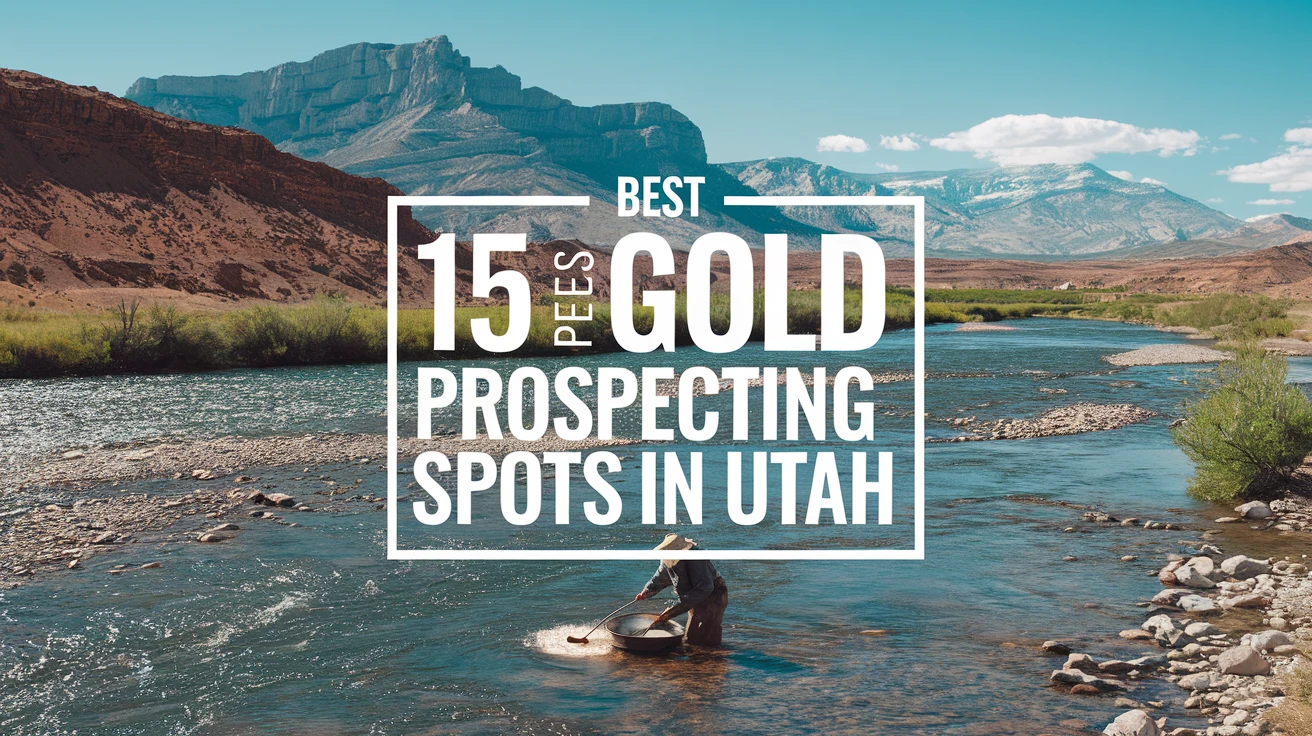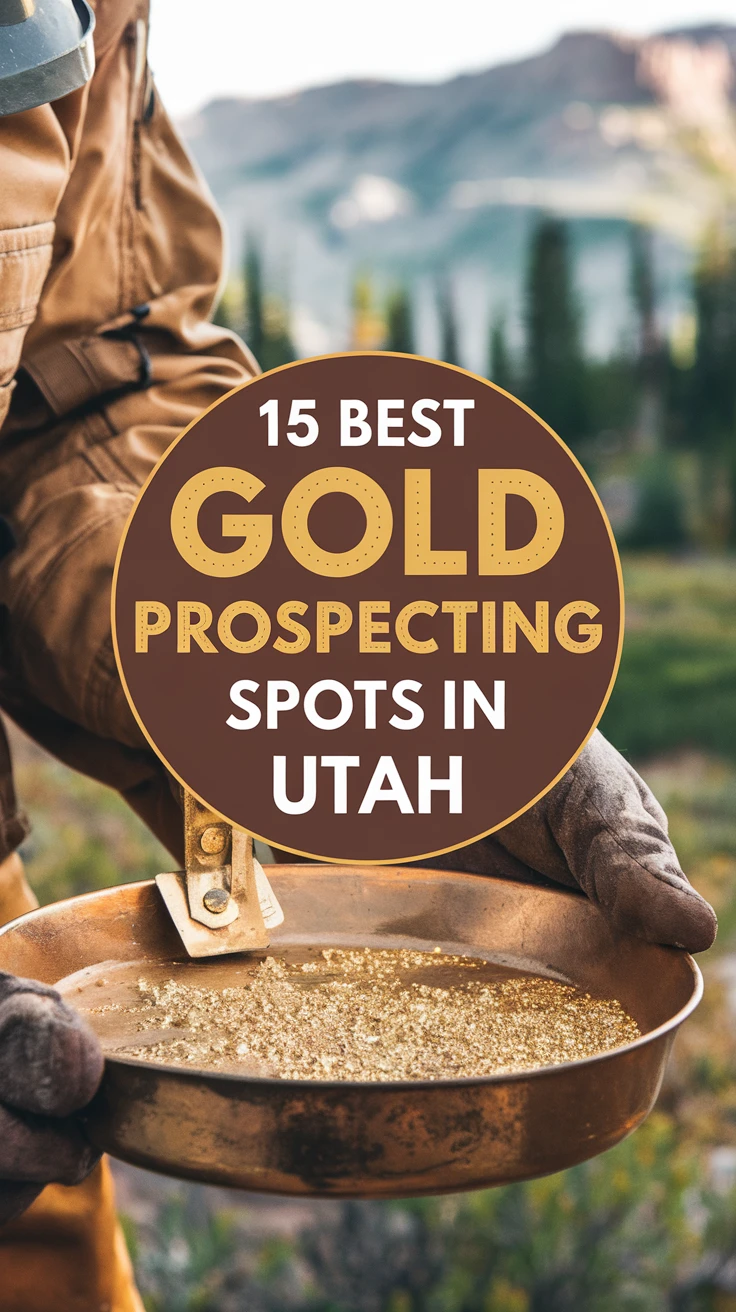
The rugged landscapes of Utah hide more than just stunning natural beauty – they conceal golden treasures waiting to be discovered by determined prospectors. From the historic mines of the Bingham Canyon to the remote streams of the Uinta Mountains, Utah’s gold prospecting opportunities continue to attract both seasoned miners and newcomers hoping to strike it rich. This comprehensive guide will take you through the 15 best locations for gold prospecting in Utah, complete with insider tips and essential information to maximize your chances of success.
Understanding Utah’s Golden History
Utah’s gold mining history dates back to the 1850s, when early Mormon settlers first discovered precious metals in the territory. While not as famous as California’s gold rush, Utah has produced significant amounts of gold, often found in combination with other minerals like copper and silver.
Before heading out to any prospecting location, you’ll need to understand the basic requirements:
-
– Valid prospecting permit from the Utah Division of Oil, Gas and Mining
– Knowledge of claim boundaries and private property restrictions
– Basic prospecting equipment
– Understanding of local regulations and environmental guidelines
Let’s explore the most promising locations across the state, grouped by region for easier planning.
Northern Utah’s Premier Prospecting Sites
1. Bingham Canyon Area
While the famous Kennecott Copper Mine dominates this area, nearby public lands offer opportunities for recreational prospecting. Look for ancient stream beds and work the gravel deposits carefully.
2. Weber River
Historical records show consistent gold findings along the Weber River, particularly near:
-
– Morgan County sections
– Devils Slide area
– Echo Canyon confluence
3. Duchesne River
Known for fine gold deposits, this location requires patience and proper panning techniques. Best results are found during lower water seasons.
4. Green River
The Green River offers numerous access points for prospectors, with particularly promising areas near:
-
– Flaming Gorge
– Browns Park
– Desolation Canyon
5. East Canyon Creek
This lesser-known location often yields surprising results for patient prospectors. Focus on areas where the creek bends and creates natural collection points.
Table of Northern Utah Prospecting Conditions:
| Location | Best Season | Gold Type | Difficulty Level |
|---|---|---|---|
| Bingham Canyon | Spring/Fall | Placer/Lode | Moderate |
| Weber River | Summer | Placer | Easy |
| Duchesne River | Late Summer | Fine Placer | Moderate |
| Green River | Spring | Placer | Challenging |
| East Canyon Creek | Summer | Fine Placer | Easy |
Central Utah’s Hidden Treasures
6. American Fork Canyon
Rich in mining history, this canyon continues to yield gold for careful prospectors. Focus on the creek beds and historic mining areas.
7. Spanish Fork River
While not as well-known, this river has produced consistent finds, especially after spring runoff.
8. Tingey’s Creek
A hidden gem for prospectors, offering both placer and small lode deposits. Best accessed during late summer months.
9. Fish Creek
Located in the Wasatch Plateau, this creek requires some hiking but often rewards prospectors with decent finds.
10. Mount Nebo Area
Multiple streams and historical mining sites make this area worth exploring.
Table of Central Utah Prospecting Equipment Needs:
| Location | Required Equipment | Accessibility | Water Source |
|---|---|---|---|
| American Fork Canyon | Sluice Box, Pan | Good | Year-round |
| Spanish Fork River | Pan, Shovel | Excellent | Year-round |
| Tingey’s Creek | Pan, Classifier | Moderate | Seasonal |
| Fish Creek | Light Equipment | Limited | Seasonal |
| Mount Nebo Area | Full Kit | Moderate | Varies |
Southern Utah’s Gold-Rich Regions
11. Colorado River Placer Areas
Famous for fine gold deposits, these areas require specialized techniques but can be quite productive.
12. San Juan River
Historical gold rushes occurred here, and gold can still be found with proper equipment and patience.
13. Henry Mountains
This remote region offers both placer and lode gold opportunities for well-prepared prospectors.
14. Ticaboo Creek
Lesser-known but potentially rewarding, especially after flash floods redistribute deposits.
15. La Sal Mountains
Multiple streams in this area have produced gold, though access can be challenging.
Essential prospecting tips for Southern Utah:
-
– Bring plenty of water and supplies
– Check weather forecasts carefully
– Inform others of your location
– Carry proper permits and identification
– Research claim boundaries beforehand
Conclusion
Utah’s diverse landscape offers numerous opportunities for gold prospecting, from easily accessible rivers to remote mountain streams. Success requires patience, proper equipment, and thorough research. Remember to always follow local regulations, respect private property, and practice environmental responsibility. Whether you’re a newcomer or experienced prospector, these 15 locations provide excellent starting points for your Utah gold prospecting adventure.
Key Takeaways
- Obtain necessary permits and research claim boundaries before prospecting
- Northern Utah offers the most accessible prospecting locations
- Central and Southern regions require more preparation but can be highly rewarding
- Proper equipment and techniques vary by location
- Seasonal timing significantly impacts prospecting success
Frequently Asked Questions
Do I need a permit to prospect for gold in Utah?
Yes, you need a prospecting permit from the Utah Division of Oil, Gas and Mining. Additional permits may be required for specific locations or methods.
What’s the best season for gold prospecting in Utah?
Late spring through early fall offers the best conditions, with late summer being ideal for many locations due to lower water levels.
Can I keep the gold I find?
Yes, if you’re prospecting on public lands with proper permits and following regulations. However, you must respect private claims and property.
What basic equipment do I need to start prospecting?
Essential equipment includes a gold pan, shovel, classifier, snuffer bottle, and proper safety gear. More advanced equipment may be needed for specific locations.
Are there any areas where prospecting is prohibited?
Yes, prospecting is prohibited in national parks, most state parks, and private property without permission. Always verify land status before prospecting.
How much gold can I expect to find?
Yields vary greatly depending on location, technique, and experience. Most recreational prospectors find small amounts of fine gold and occasional larger pieces.
Is it better to prospect alone or with a group?
For safety reasons, it’s recommended to prospect with at least one partner, especially in remote areas. Many local prospecting clubs offer group outings and training.
What’s the difference between placer and lode gold?
Placer gold is found in streams and rivers, while lode gold is embedded in rock formations. Most recreational prospecting focuses on placer deposits.
How deep should I dig when prospecting?
Focus on bedrock areas and natural collection points. Most productive digging occurs within the first few feet of material above bedrock.
Are there any special considerations for winter prospecting?
Winter prospecting is possible but challenging due to frozen ground and cold water. Special equipment and safety precautions are necessary.

